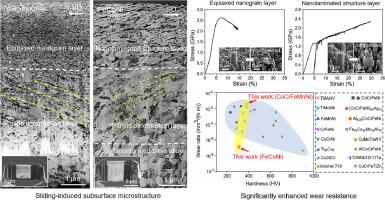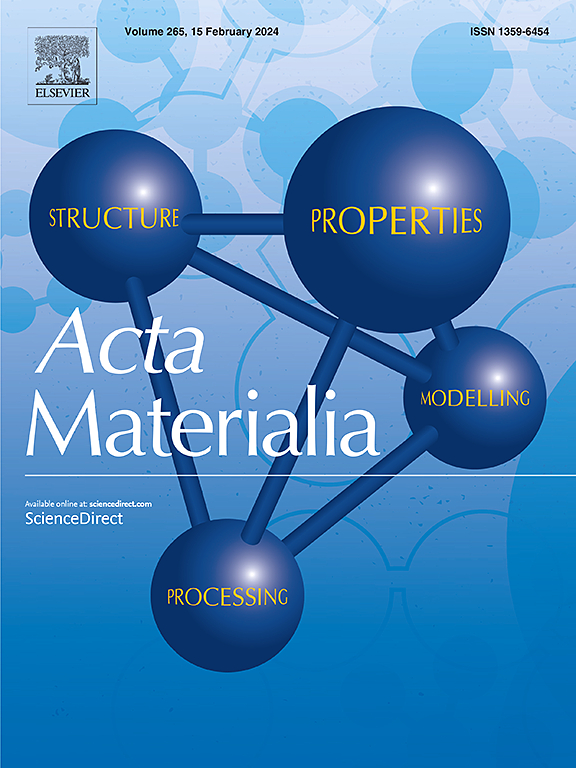Significant reduction in friction and wear of an ultrafine-grained single-phase FeCoNi alloy through the formation of nanolaminated structure
Abstract
Reducing friction and wear has long posed a challenge for metallic components under dry sliding conditions. This study unveils a significant reduction in friction and wear of a single-phase ultrafine-grained FeCoNi multi-principal element alloy (MPEA). Through a comparative analysis of the sliding wear behaviors of single-phase ultrafine-grained CoCrFeMnNi and FeCoNi alloys with different stacking fault energies and detailed microstructure characterization, we found that despite having a similar initial microstructure and even a 20% lower hardness, the FeCoNi alloy exhibited a remarkable 52% reduction in coefficient of friction, and more notably, a wear rate three orders of magnitude lower than that of CoCrFeMnNi. The significantly reduced friction and wear can be attributed to the remarkable disparities in wear-induced surface microstructures between the two alloys during repetitive sliding. The sliding wear of FeCoNi alloy triggers the formation of a nanolaminated structure with excellent strain-hardening capacity and substantial deformation plasticity, as evidenced by micropillar compression tests. Conversely, the twinning-active CoCrFeMnNi alloy induces the formation of an equiaxed nanograin layer which exhibits a high compressive strength but catastrophic failure behavior after the onset of yielding, and thus deteriorates the wear resistance. The findings provide significant insights into fundamental understanding of the plastic deformation of single-phase MPEAs during wear and guide the design of wear-resistant alloys.



 求助内容:
求助内容: 应助结果提醒方式:
应助结果提醒方式:


